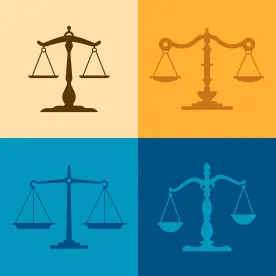A parent corporation is typically not held liable for the acts of a subsidiary. As such, disregarding the corporate form (i.e., by piercing the corporate veil) and holding the parent liable is an extraordinary remedy. That said, if a parent company exercises enough control over a subsidiary, however, courts may hold the parent liable. Because there is often some degree of overlap between a parent and its subsidiary, a question courts are often faced with is just how much control is enough to justify imposing liability on a parent for its subsidiary’s actions?
While the standard varies between jurisdictions, courts generally require a high level of control. For example, under Delaware law, the parent must “dominate” the actions of the subsidiary, and courts examine whether the parent company founded the subsidiary, manages or finances the subsidiary, or compensates employees of the subsidiary (among other things). This question was at issue in a recent high-profile case from the District of Delaware: FinancialApps, LLC v. Envestnet, Inc.. By 2017, FinancialApps (FinApps) and Yodlee had executed a series of licensing agreements. Under the agreements, FinApps planned to develop a product capable of generating financial reports, and Yodlee would market and sell that product. But the relationship soured. FinApps alleged that Yodlee engaged in a “systematic scheme” to reverse engineer their intellectual property and “secretly” create a competing product line. Based on these allegations, FinApps brought claims against Yodlee and Envestnet, Yodlee’s parent company, for misappropriation of trade secrets, tortious interference with prospective business opportunities, and a litany of other state and federal claims. Envestnet moved for summary judgment and responded that FinApps had the “wrong defendant.”
The magistrate judge, Christopher Burke, disagreed and recommended that a jury decide whether Envestnet should be variously liable for Yodlee’s actions. He found the following evidence—from securities filings, internal correspondence, and other publicly available information—could meet the bar in Delaware to establish such liability:
Yodlee may have been a business unit of Envestnet (g., Envestnet’s 10-K Form explains that the company had a data analytics business segment with product offerings from “Envestnet │Yodlee and Envestnet”)
Envestnet executives may have overseen Yodlee’s work (g., Yodlee’s sole board member was, at one point, Envestnet’s CEO)
Envestnet employees may have also worked for Yodlee
Yodlee’s employees may have all received compensation from Envestnet
In order to avoid a finding of liability for a subsidiary’s conduct, a corporate parent can take active steps to separate their business. For example, it could hire separate management for the subsidiary or separate the two entities’ assets, and then ensure those changes are reflected in securities filings and other publicly available information. A few adjustments can go a long way to ensure that businesses and their subsidiaries do not look like two sides of the same coin. To that end, company leadership should consult with internal and outside counsel to ensure businesses are not unexpectedly held accountable for the actions of subsidiary.



 />i
/>i
